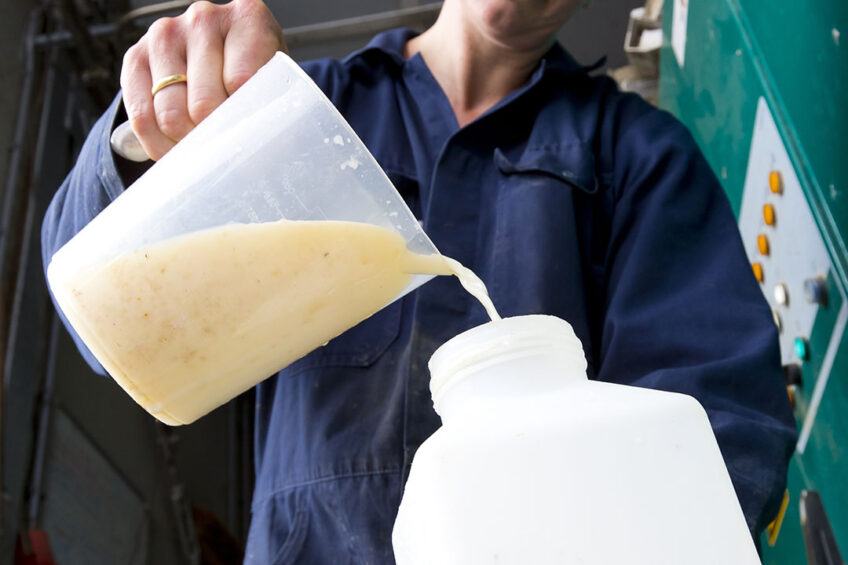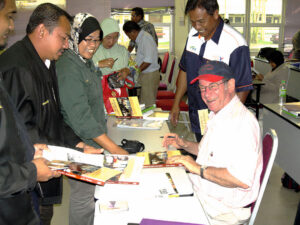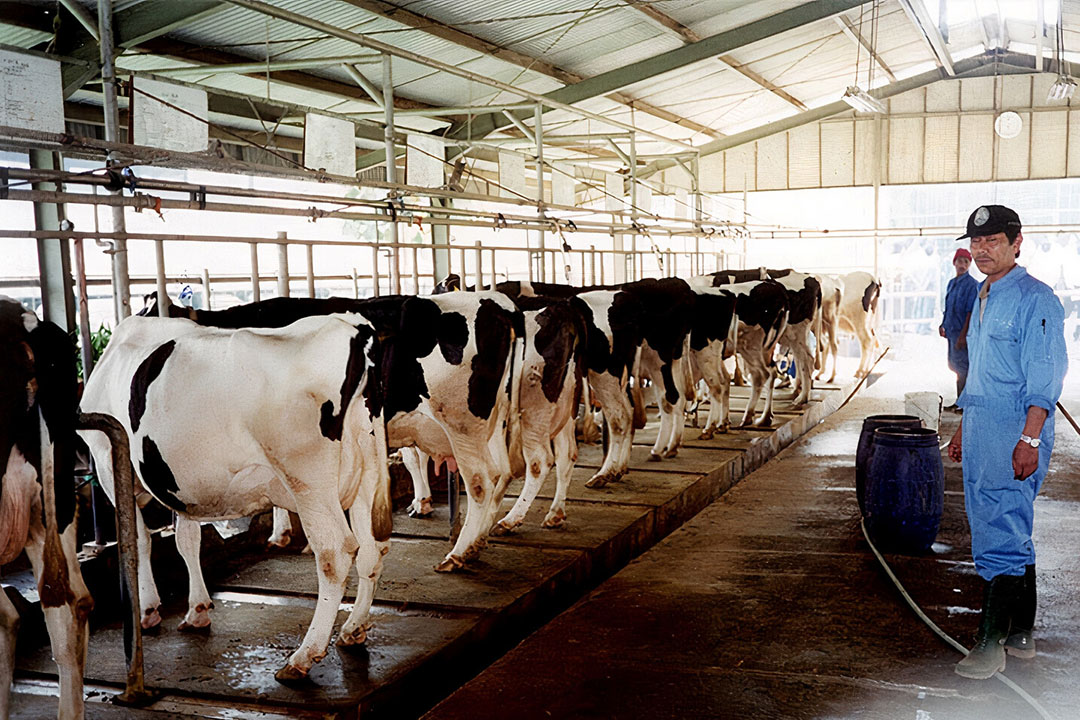Quality feed for healthy heifers in the tropics

Farmers in the tropics should commit enough time and resources to rearing their own replacement heifers, says Australian livestock specialist and author Dr John Moran. He says that because the animal is not producing anything saleable, farmers tend not to put too much emphasis on this part of their farm.

Dr Moran has written several books about dairy farming, many of them specifically about tropical dairy farms in South-East Asia. According to Dr Moran, farmers in the tropics tend not to put too much emphasis on rearing their own replacement heifers “because the animal is growing, and not producing anything saleable. Milking cows are the key to their operation. This has always been a problem. Farmers haven’t been growing their heifers out properly.”
The age of first calving should be 24 to 26 months, Dr Moran points out. “But in many smallholder dairy farms in the tropics it is often more than 30 to 35 months. That’s another 6 months of feeding the heifer, before she generates any income.”
Colostrum management
Dr Moran says a better emphasis on the heifer starts with colostrum management. “A dairy cow is unique in that it does not allow the movement of antibodies across the placenta. Colostrum feeding management is important for calves to develop an immunity to infections and bacteria as they grow up. These antibodies can only be absorbed across the calves’ gut into their blood for their first 48 hours of life.”
The livestock specialist points out that the essence of good calf rearing depends on 2 major nutritional factors.
An adequate intake of high-quality colostrum within the first day of life
Feeding management to encourage early rumen development.

Weaning management
Weaning management is also key to rearing a healthy animal, he says. “You’ll find that farmers in a lot of countries in the tropics import calf milk replacer. That’s going to make sure the heifer calf grows properly. So that the calf can get to its target of 0.7 to 0.8 kg of live weight gain and gets to 280 kg of live weight at 12 months of age, if it is a Friesian.”
By getting the calf to 280 kg at 12 months, farmers can ensure that the heifer calf is going to be cycling at a younger age. “You would be able to get to first calving at an age of 24 months for 5,000 or 6,000 litre cows. It’s all about optimising the environment so the calf can grow at its genetic potential. You can add thousands of litres of milk production to a well-grown heifer.”
Farmers should strive to get 300 days of lactation, Dr Moran says. “Because the management is then directed to the cow cycling at 30 days of having its first calf. Consequently, the calving interval is smaller. You want a calving interval of 12 months.”
Heat stress and cow comfort
Ideally, farmers can wean the calf at 6 to 8 weeks of age. “As long as we ensure there is sufficient good quality sources of nutrients,” Dr Moran says. “In the tropics, farmers rear their heifer calves carefully until weaning but often neglect them thereafter. In the humid tropics young calves are very susceptible to heat stress. I have been to many smaller farms there, and poor ventilation can be a problem. Large-scale operations pay a lot of attention to good ventilation and temperature.”
Heat stress reduces appetite and hence milk yield, Dr Moran says. “This is why farmers should put a lot of emphasis on cow comfort. I know switched-on farmers that actually have an automatic cow shed hose, where the cows can choose to have a shower and then dry off in the wind, which will reduce heat stress.”
Listen to the cow
Dairy farming is the most sophisticated form of agriculture, Dr Moran says. “Good management depends on the farmer putting himself in the skin of a cow. He has got to look at his herd and think ‘If I was a cow, how could I be more comfortable and more productive?’ For example: You have to make sure that the forage is harvested before it gets too mature. Some farmers then let it wilt for a few hours. This will increase the dry matter content and the appetite. It will increase the rate of passage through the rumen.
Weaning age
“The weaning age tells you a lot. A calf will tell you when she wants to be weaned. When she is eating a kilogramme of concentrates a day for instance, you can reduce the milk. You’re feeding the calf to increase the rate at which the rumen develops. Good concentrates will help, but above all roughage.”
Growth rates
Good heifer growth rates are important for milk production and fertility and to minimise calving difficulties. “Growth rate means bone development. The bones must develop a large enough gap for the pregnant heifer to calf-down. This reduces calving difficulties through a well-developed bone structure.”
Feed efficiency will help good heifer growth rates and ultimately milk production. Dr Moran adds, “This is controlled by the quality of the feed you are giving to the milking cow and her ability to easily convert those nutrients into milk. This is also why I often speak about cow comfort. A grazing cow needs to lay down for 12 to 14 hours to produce the components of milk in the udder.”
Quality of feed for youngstock
After weaning, the quality and amount of dry feed has the biggest influence on calf performance. In the tropics farmers often save their best quality feeds for their milking cows, meaning that youngstock suffer from poor feeding management. Calves that are poorly managed after weaning are disadvantaged for their entire life, he says. “Even if they are well fed after mating, their ultimate mature size will be restricted and, if they do put on extra weight, it tends to be fat.”
Undersized heifers
If growth rates are not maintained, heifers will not reach their target live weights for mating and first calving. Undersized heifers have more calving difficulties, produce less milk and have greater difficulty getting back into calf during their first lactation.
Staff
Looking after staff is also important for dairy farmers, Dr Moran states. “It’s good to create a system of communication and involvement, so that all know what progress is being made in achieving goals and objectives of the farm operation.” He advises dairy farmers to develop a set of key task areas and key performance indicators (KPIs) and to quantify progress within each task area of the KPIs.
Dr Moran’s e-books are available for online (free of charge). He is also an advisor for investors who want to invest in large-scale dairy farms in South-East Asia.






